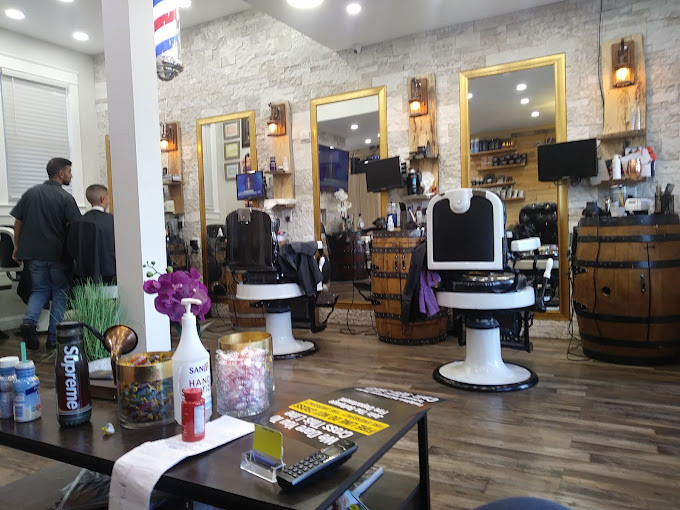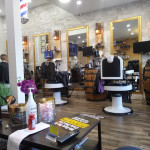Barbering is a craft that has been passed down through generations, and it continues to be an important profession in modern times. Barbers at Bethpage possess a unique set of skills that allow them to transform hair into works of art, and their talents are admired and celebrated by many. The history of barbering can be traced back to ancient times when people would visit barbers for haircuts, shaves, and more.
Today, the importance of barbering has not diminished. Barbershops are still popular destinations for men and women seeking a fresh haircut or a relaxing shave. Barbers Bethpage not only provide a service, but they also create an environment for their clients to unwind and connect with others. A visit to the barbershop is a time-honored tradition that has been passed down through generations, and it continues to hold a special place in the hearts of many.
Barbering is a craft that requires a unique set of skills. A good barber must have a keen eye for detail, an understanding of different hair types and textures, and the ability to execute various techniques with precision. They must be knowledgeable about different hairstyles and cuts and must be able to adapt to the preferences and styles of their clients. Barbering is an art form that requires creativity, patience, and attention to detail.
The tools of the trade are also an essential part of barbering. Barbers must know how to properly use clippers, scissors, and razors to achieve the desired look for their clients. They must also know how to care for and maintain their tools to ensure they remain in top condition.
Barbering is a craft that has stood the test of time. It is a profession that requires skill, creativity, and dedication. Barbers have been an important part of communities throughout history, and their work continues to be appreciated and celebrated today. The art of barbering is truly a unique and special craft that deserves recognition and admiration.

The Skills of Barbering
A skilled barber is a true artist who possesses a unique set of talents and abilities that allow them to create beautiful hairstyles and designs. One of the most critical skills of barbering is understanding different hair types and textures. Hair can range from fine and straight to thick and curly, and each hair type requires different techniques and approaches. A good barber understands the unique properties of each hair type and knows how to work with it to create the best possible results.
Knowledge of various hairstyles and cuts is also an essential skill for barbers. There are many different hairstyles and cuts to choose from, and each one requires a specific technique and approach. From the classic crew cut to the modern undercut, a skilled barber must be familiar with all the different styles and know how to achieve them with precision.
Techniques for hair cutting, shaving, and grooming are also essential skills for barbers. Hair cutting requires a steady hand, a keen eye for detail, and the ability to execute precise cuts with precision. Shaving, on the other hand, requires a steady hand, excellent technique, and a deep understanding of facial hair growth patterns. Grooming involves trimming and shaping facial hair, including beards, mustaches, and sideburns, to achieve a polished and refined look.
Attention to detail and precision is perhaps the most crucial skill of all for a barber. Every haircut, shave, or grooming session requires a level of precision and attention to detail that is unmatched in any other profession. A good barber must have a steady hand, a sharp eye, and the ability to work with precision and accuracy. They must be able to anticipate their client's needs and adjust their techniques accordingly to achieve the best possible results.
In conclusion, the skills of barbering are many and varied. From understanding different hair types and textures to the knowledge of various hairstyles and cuts, techniques for hair cutting, shaving, and grooming, and attention to detail and precision, a skilled barber must possess a unique set of talents and abilities. Barbering is truly an art form that requires dedication, patience, and a deep understanding of the craft. The skills of a talented barber are an essential part of the grooming industry and are appreciated and celebrated by clients around the world.
The Tools of Barbering
The tools of barbering are essential components that enable a barber to execute their craft with precision and accuracy. Understanding the basics of each tool is crucial, as is the ability to use them properly to achieve the best results.
An overview of essential barbering tools is an excellent place to start. Clippers, scissors, and razors are the primary tools that every barber must have. Clippers are used to cut hair quickly and efficiently and are ideal for achieving a uniform length. Scissors, on the other hand, are used for more precise cuts and for creating textures and layers. Razors are used for shaving, creating clean lines, and shaping beards and mustaches.
Knowing how to use each tool properly is essential for achieving the best possible results. Clippers should be held firmly and moved smoothly and consistently over the hair to achieve the desired length. Scissors should be held at the correct angle and moved in a steady and precise manner to create clean and accurate cuts. Razors should be held at the correct angle and moved with a light touch to create clean lines and remove unwanted hair.
Caring for and maintaining tools is also a crucial aspect of barbering. Clippers, scissors, and razors must be cleaned, oiled, and sharpened regularly to ensure they remain in top condition. Dirty or dull tools can damage hair and create an uneven or unprofessional look, so it's essential to keep them in good condition.
In conclusion, the tools of barbering are a vital part of the craft and must be used properly to achieve the best possible results. Understanding each tool's basics, knowing how to use them correctly, and caring for and maintaining them are all critical aspects of barbering. A skilled barber must have a deep understanding of each tool and be able to use them with precision and accuracy to create beautiful hairstyles and designs.

The Artistry of Barbering
The artistry of barbering is a crucial component of the craft, as it involves creativity, communication, and an understanding of individual preferences and styles. A skilled barber must be able to create designs and execute haircuts that are both aesthetically pleasing and functional.
Creativity is a critical component of the artistry of barbering. Barbers must be able to design and execute haircuts that are unique and visually appealing. They must be able to use their creativity to develop styles that are both trendy and classic, blending traditional techniques with modern trends. Creativity also involves the ability to problem-solve and think outside the box when faced with a difficult or unique challenge.
Balancing tradition with modern trends is another important aspect of the artistry of barbering. While traditional techniques are still relevant and effective, modern trends and styles are constantly evolving, and barbers must stay up-to-date with the latest techniques and trends to remain competitive. A skilled barber must be able to balance tradition with modern trends to create hairstyles that are both timeless and relevant.
Communication with clients is also an essential aspect of the artistry of barbering. A good barber must be able to listen to their client's needs and preferences and communicate effectively to ensure that their vision is realized. Clear communication is key to ensuring that both the barber and the client are on the same page and that the result is a haircut that the client is happy with.
Adapting to individual preferences and styles is the final piece of the puzzle when it comes to the artistry of barbering. Every client is unique, with their own set of preferences, styles, and hair types. A skilled barber must be able to adapt to these individual preferences and styles and create haircuts that are customized to the client's needs. Adapting to individual preferences and styles also involves the ability to work with different hair types and textures and adjust techniques accordingly.
In conclusion, the artistry of barbering is a critical aspect of the craft that involves creativity, communication, and the ability to adapt to individual preferences and styles. A skilled barber must be able to balance tradition with modern trends, communicate effectively with clients, and use their creativity to design and execute haircuts that are both visually appealing and functional. The artistry of barbering is truly a unique and special craft that requires dedication, patience, and a deep understanding of the craft.

Conclusion
In conclusion, barbering is an essential craft that has been passed down through generations and continues to thrive today. The importance and artistry of barbering cannot be overstated, and it is a craft that requires dedication, skill, and passion to master.
Barbershops and barbers play a significant role in their communities, offering not just haircuts but also a space for conversation and connection. Supporting local barbershops and barbers is crucial to preserving this important craft and keeping it alive for generations to come.
As the world continues to evolve and change, so too will the world of barbering. However, the future of barbering is bright, and there will always be a need for skilled barbers who can create beautiful hairstyles and designs.
In closing, we must appreciate the talent and craftsmanship of barbers and recognize the important role they play in our communities. Barbers are artists, and their work is a true reflection of their dedication and skill. Let us continue to support and celebrate the craft of barbering, and ensure that it continues to thrive for generations to come.



























